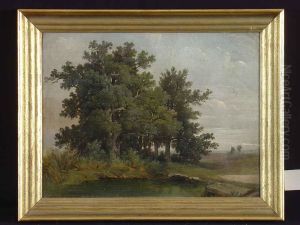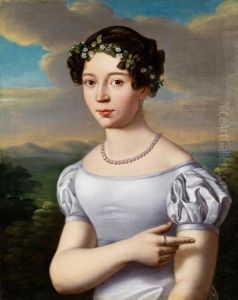Johann Hermann Paintings
Johann Hermann was a notable figure in the history of science, particularly in the fields of medicine, zoology, and botany, during the 18th century. Born on December 31, 1738, in Barr, Alsace, which at the time was part of the Holy Roman Empire, Hermann's contributions spanned across several disciplines, reflecting the Enlightenment era's spirit of curiosity and discovery. He is not traditionally categorized solely as an artist but rather as a scientist and naturalist whose work had significant implications for the visual documentation of biological diversity.
After completing his education in medicine at the University of Strasbourg, Hermann quickly established himself in the academic and scientific communities. His career was notably marked by his appointment as a professor of medicine at the University of Strasbourg, a position through which he influenced many students and contributed to the advancement of medical knowledge. However, Hermann's interests and contributions were not confined to medicine alone.
He was deeply engaged in the study of natural history, particularly in zoology and botany. Hermann's work in these areas was groundbreaking, contributing to the classification and understanding of various species. His most famous work, 'Tabula affinitatum animalium' (1783) and 'Observationes zoologicae quibus novae complures, published posthumously in 1804, were significant contributions to the field of zoology. These works, richly illustrated with detailed drawings, helped to lay the foundations for future taxonomic and systematic studies in zoology.
Moreover, Johann Hermann was an avid collector, amassing a vast collection of specimens from the natural world, which included plants, animals, minerals, and fossils. This collection served as an invaluable resource for research and education, not only for Hermann but also for future generations of scientists. After his death on October 4, 1800, his collection was incorporated into the Natural History Museum of Strasbourg, where it continued to contribute to scientific discovery and education.
Despite his primary identity as a scientist, Hermann's legacy intersects with art through his contributions to scientific illustration. The detailed drawings included in his publications required a keen eye for detail and an artistic hand, showcasing not only his scientific expertise but also his contribution to the visual arts. In the context of the Enlightenment, figures like Hermann exemplify the era's interdisciplinarity, bridging the gap between science and art through their work.

